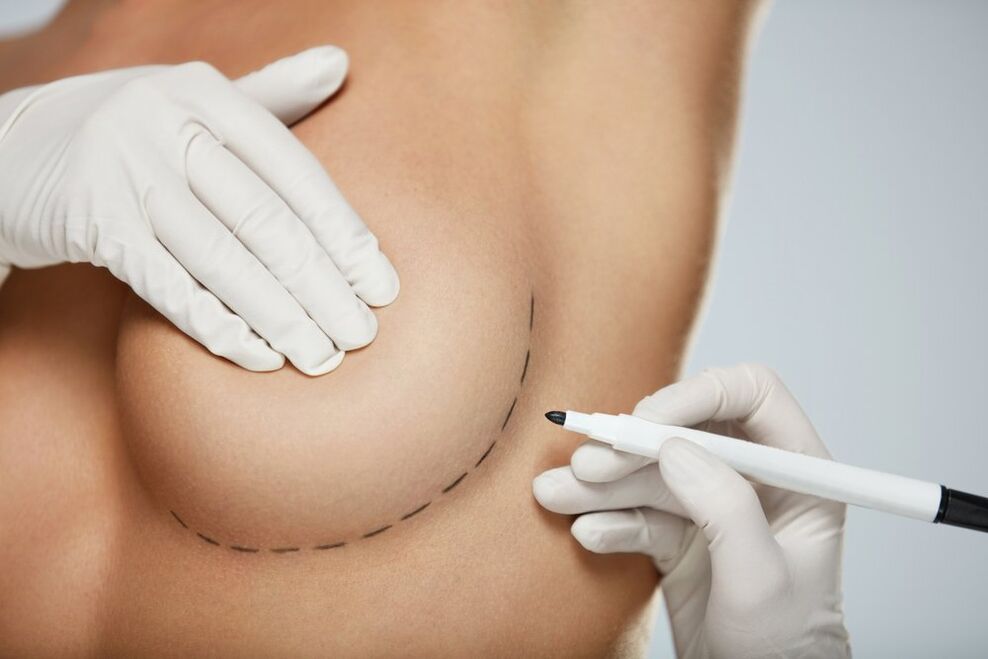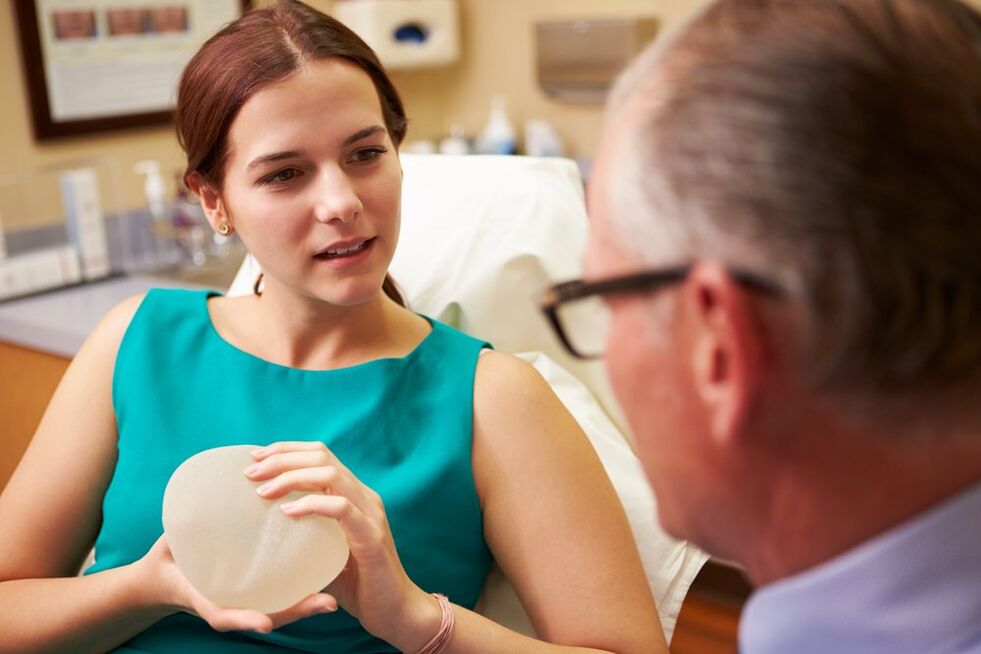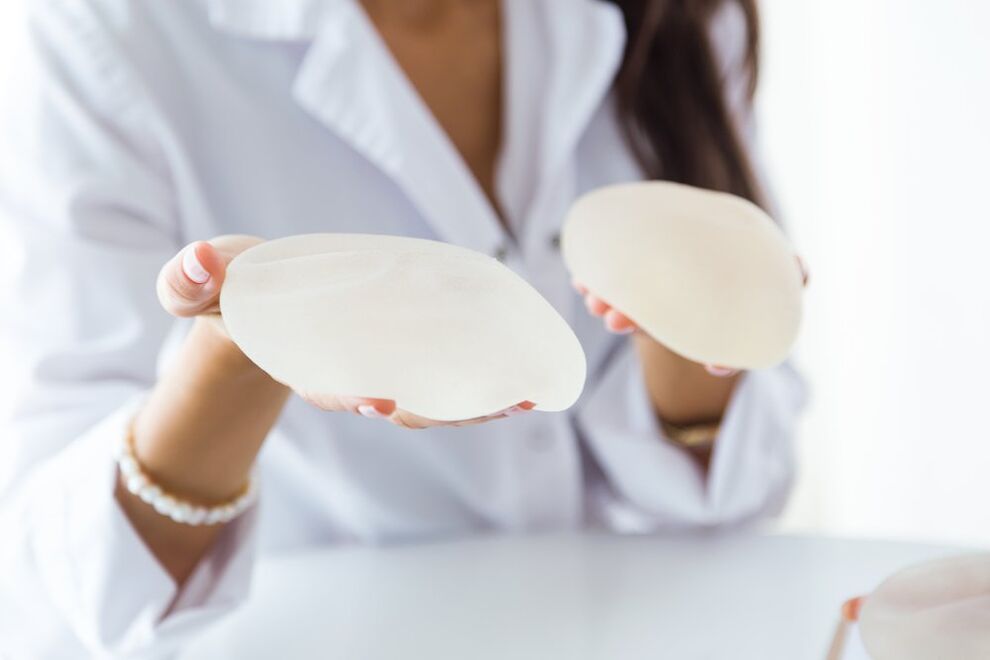Your body is your business! But when you go to the plastic surgeon with the request to enlarge the breast, he will certainly ask about the reason for the decision. And if this is your desire to look beautiful in a swimsuit or to fulfill your partner's dream of big breasts, you will most likely be rejected.
Because breast enlargement is possible only for yourself and only on condition that you want to feel comfortable in your body!
Honest information about breast augmentation

Breast augmentation is a serious surgery that requires an informed decision and a careful calculation of the possible risks. You need to prepare for it: get tested, undergo the necessary tests, finish taking some drugs first, lose weight if the weight exceeds the norm and quit smoking.
But even thorough preparation does not guarantee a favorable outcome. Therefore, before you decide to go under the surgeon's scalpel, find out what awaits you and what can happen!
Before and after photos are not always informative
These days, any plastic surgery clinic has its own website where you can view "before" and "after" photos of a particular doctor's surgery. But when looking at them, patients must be aware that their breasts may look different.
To find out what the breasts will look like after surgery, a doctor of medical science, a plastic surgeon recommends evaluating the results of people with similar body types. Such photos will give a more realistic image.
Is it possible to enlarge breasts without surgery
Many women are tempted to enlarge their breasts without surgery in one or two procedures. Cosmetologists and plastic surgeons can fulfill this wish by suggesting the use of hyaluronic acid-based fillers or their own fat cells.
However, it should be noted that these are temporary solutions. They have both advantages and disadvantages. And predicting the outcome of the procedure in this case will be more difficult than with a surgical breast lift.
Shape correction with fat cells has a significant drawback.

Not all fat cells will undergo a "transplant". According to medical science doctor,30 to 50% of fat cells die.
At the same time, no one knows which cells will survive and which will not. Therefore, your expectations about breast augmentation with fillers may not coincide with reality after the procedure.
The first breast surgery is unlikely to be the last
The implant is not a permanent purchase. According to plastic surgeons, most of them need to be replaced within 12-15 years after surgery, and some even earlier.
The implant can begin to leak or form scar tissue around the implant, which damages the shape of the breast and threatens health. In addition, external and internal reasons can prompt implant replacement - weight gain or loss, breastfeeding, gravity.
Doctors recommend planning surgery only when there is sufficient confidence that the budget will allow reconstruction work in the next 12 years.
There are several types of incisions during surgery.
Experts say, depending on the initial shape of the breasts and desired parameters, the doctor may recommend surgery with incisions in the armpits, folds under the breasts, in the areola and in some cases. fit in the abdomen.
The most common options are incisions in the areola and folds under the breast. The location of the incision should be discussed with your doctor.
It is not always possible to enlarge your breasts to the desired volume
If a person representing the fair sex is essentially an A cup size, she won't be able to get a DD volume in one surgery. The skin of the breasts, just like the body, takes time to get used to the changes. Therefore, doctors recommend breast augmentation 1-2 sizes first, then, if necessary, after a few years, change to a larger size.
Dramatic changes can be expensive

"The most important thing when planning breast augmentation surgery is finding a good implant, " says MD, plastic surgeon. "By my estimates, about 30% of errors and complications during the procedure. Plastic surgery is because the doctor or the patient chooses the wrong implant.
Choosing an implant that is too large for the patient can lead to thinning of the breast tissue and surrounding muscles, making it difficult to recover. A good doctor will always tell you the maximum implant size that the patient can orient.
Need time to recover from surgery
Both after breast augmentation and after breast reduction, patients need time to recover. The minimum sick leave will be 5-7 days. When finished, you can return to work as long as you do not have to do hard physical labor.
Today's painkillers work wonders, but don't overestimate them!
The implant can be felt under the skin
It has been suggested that one can always feel the implant when touching a woman's breast,But this is not the case. It is very difficult to find the correct selection and good settings. However, there is such a possibility!
Another person is more likely to suspect the presence of an implant in a woman who initially had a small breast volume (and thus a small amount of tissue) than a woman with a larger volume.
Some implantable devices can reduce health

Experts link certain types of breast implants to an increased risk of cancer. "We're talking about a type like non-reproductive large cell lymphoma. It's been suggested that it's somehow connected to textured breast implants, since most women get cancer usually. diagnosed with cancer, " warned the plastic surgeon.
Squeezing can affect your ability to breastfeed
The doctor said: "By making an incision in the breast, we disrupt the natural anatomical structure, reducing the amount of milk-producing breast tissue. - However, there is a high chance that you can still breastfeed. If the incision is far from the nipple, the ducts and milk glands are unlikely to be damaged. "
Temporary loss of sensitivity in nipples after surgery
For a few weeks after surgery, many patients notice that their breasts are not tight, but in most cases this is a temporary phenomenon. Rarely complete loss of sensation.
A doctor of medical science, a plastic surgeon, said that although she has operated on thousands of patients, she has never encountered a case of complete loss of breast sensitivity in women.
Surgery can affect a woman's posture

If a woman chooses a breast volume slightly larger than her natural data, her posture is unlikely to change from this. But when it comes to breast implants of impressive size, their weight can be discerned, and therefore, more difficult to put on.
If there is a history of back pain, this factor should be taken into account.
Maybe just breast augmentation is not enough
After pregnancy, childbirth, and breastfeeding, some women dream of breast augmentation as a panacea that will solve all their appearance problems. But it may not be enough.
Breast augmentation alone will not make breasts firm and firm. In some cases, two surgeries are needed at the same time: breast augmentation and breast augmentation. Your doctor can do them at the same time.
Decisions about surgery must be balanced
Before contacting a plastic surgeon, find the answers to these questions for yourself:
- Is my current breast volume really a problem for me?
- Why do I need surgery?
- I have an "airbag" - can free money be claimed if something goes wrong?
- Am I ready to accept the possible risks of breast augmentation?
- Do I really need surgery?
The answers to these questions will help you make the right decision.
Expert comments
Oncologist, General SurgeonA mammogram or breast augmentation is a type of surgical intervention that requires special preparation.
Breast reconstruction is performed as part of cosmetic surgery, i. e. done at the request of the patient, with the exception of breast reduction surgery (breast reduction surgery) which is usually performed becausemedical reasons. The girl needs to independently assess the risks before making an appointment with a plastic surgeon.
First you need to study the contraindications to the procedure. If a woman has serious diseases of the cardiovascular system, varicose veins, bleeding disorders and cancerous diseases, these chronic diseases will become absolute contraindications to breast augmentation surgery. During pregnancy and lactation, such surgical interventions are also prohibited.
Patients diagnosed with diabetes, hypertension, coronary artery disease, rheumatism, mastoid disease, and obesity should consult their physician prior to breast augmentation surgery. In addition, during the implementation period, the chronic disease should be in stable remission.
The woman also needs to think about future pregnancies. If after the operation that the girl plans to become a mother, then it is better to carry out the operation through an incision under the breast or in the armpit. Inserting the implant through an incision in the areola of the nipple can compromise the integrity of part of the milk duct, potentially making it difficult for the baby to suckle.
You need to understand that a quality procedure will not come cheap. The cost of breast augmentation in a good clinic is on average quite high. Sign up for a consultation only with trusted specialists with extensive experience. A careful approach in choosing a doctor will reduce the likelihood of complications after surgery. As a rule, an appointment with a plastic surgeon lasts about an hour and a half. During this time, the girl needs to ask the doctor about the transplant, to determine the volume, future size and shape of the bust.
After the consultation, the activity date will be fixed. Preparation time is about two weeks. During this time, the patient takes the necessary tests to assess their health status. The list of required studies includes the following medical manipulations: clinical and biochemical blood tests, HIV testing, syphilis, hepatitis, urinalysis, coagulation, electrocardiogram, mammography, X-ray, vascular ultrasound.
The hospital stay is about 3-5 days. During this time, the main surgery was carried out, the patient's condition was monitored after the mastectomy and the first dressing change. The girl then went home for rehabilitation.
For a month, you will need to wear special compression underwear, and you should also not raise your arms above your shoulders and lift heavy objects. For two or three weeks you will only have to sleep on your back, in the next 4-5 months - on your side or on your back, you can sleep on your stomach only after six months. Classes in the gym, as well as trips to the bath or sauna will have to be postponed for 2-3 months.
During the rehabilitation period, the patient will need to stitch the wound and suture the scar with a special silicone plaster. Recovery will take about six months, after which time you can return to an active life.
Expert comments
Cosmetic SurgeonsAll implantable devices approved for use in our country are covered by a lifetime warranty. This means they do not need to be changed for medical reasons over time.
There are three types of access lines: the axillary line, the perimammary line (along the edge of the areola), and the inferior line (through the submammary fold). In my practice, I usually use the armpit line approach, since in this case the scar is practically invisible. It is located in the armpits and over time becomes wrinkled. There is no scar on the chest.
I use trans-areolar laparoscopy when axillary access does not allow for a formal surgery. I use submammary access for the second operation, if the previous implants were installed the same way. All types of access are safe if the surgeon possesses them.
Implants vary in gel softness, sheath, type and size. Surgeons can only get them in direct consultation. All implants are good quality, but usually surgeons have their own preferences. Therefore, focus on the surgeon's work and correlate them with your own ideas of beauty.
As a rule, I do not use large-volume implants - more than 450 cc. Large implants cause tissue atrophy and become visible over time, even when located in the armpit. That is, from above they are covered with muscles, and from below they are contoured. This occurs in patients with little fibrosis and a narrow chest. If a woman has wide breasts, larger implants can be placed. But such cases are quite rare.
Expert comments
Cosmetic SurgeonsAlthough breast augmentation surgery is one of the most popular cosmetic surgeries and has become quite a popular procedure, before it is performed, patients need to learn some nuances so as not to be surprised later. during surgery.
- Nothing lasts forever, and implants have a lifespan of their own. It is not possible to install them once and for a lifetime. Sooner or later they will have to change, because there is such a thing as depreciation. And how these processes will take place in a particular case, how the tissues will function, no one knows in advance, everything is individual. Therefore, after breast correction, all girls should visit a breast specialist at least every six months, need a breast ultrasound to promptly notice changes and appoint laparoscopic replacement surgery.
- Patients with certain chronic diseases and especially immunocompromised states should inform their doctor of this, who will require further testing. And only then will it make its own decision whether it is worth installing the implant or not.
- If the breast is sunken, retracted and the main part of the mammary gland is located in the lower half, then in this situation it is better to have a round implant. If there is no pronounced upper pole, then this always implies submuscular endocytosis.
- In cases where the nipples "look" sideways but the patient wants to bring them closer, this can only be done if there is a lot of skin and breast tissue. Without them, they cannot be brought close and when inserted the pacifier will stay in the original position, while the prosthesis will be inserted in the center of the nipple.
- If the patient has a narrow space between the thorax, during the endoscopic installation, it will still be naturally beautiful. When it is large enough, more than 2-2. 5 cm, it can be reduced when the implant is installed. However, it is important to take into account the fact that in this position the implant will be palpable and, over time, the appearance of a visual defect - the so-called tear, or skin abnormality. are not excluded.




























